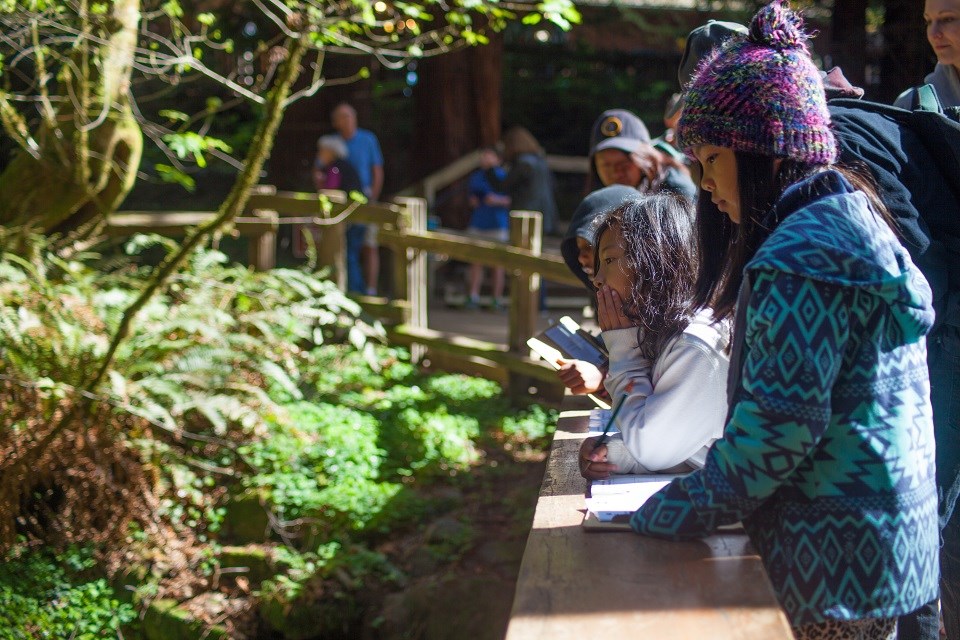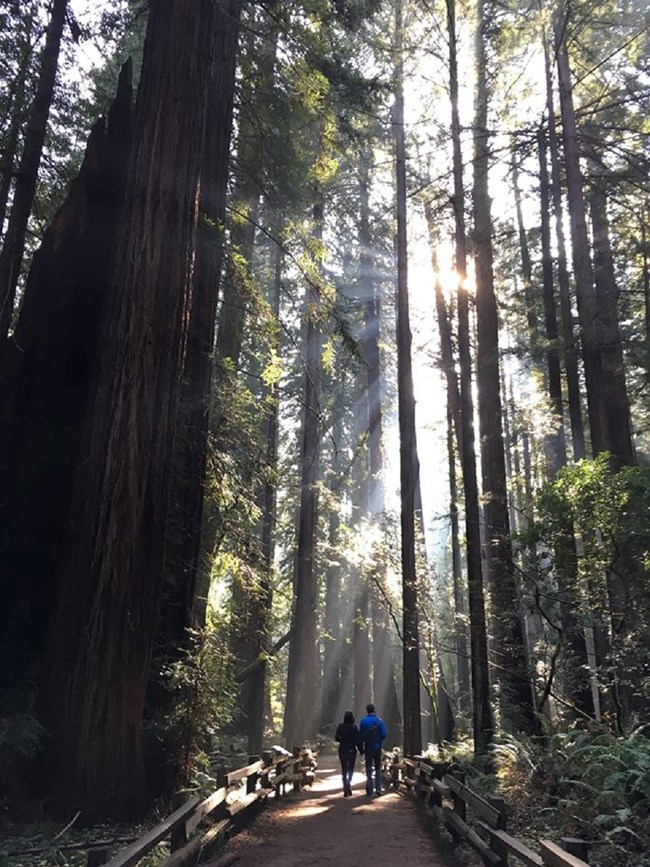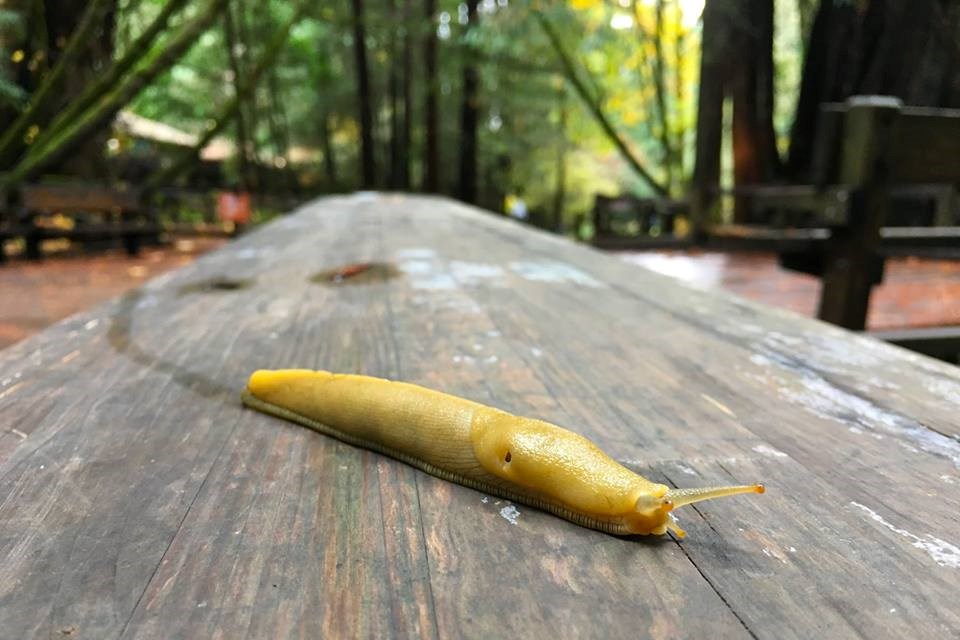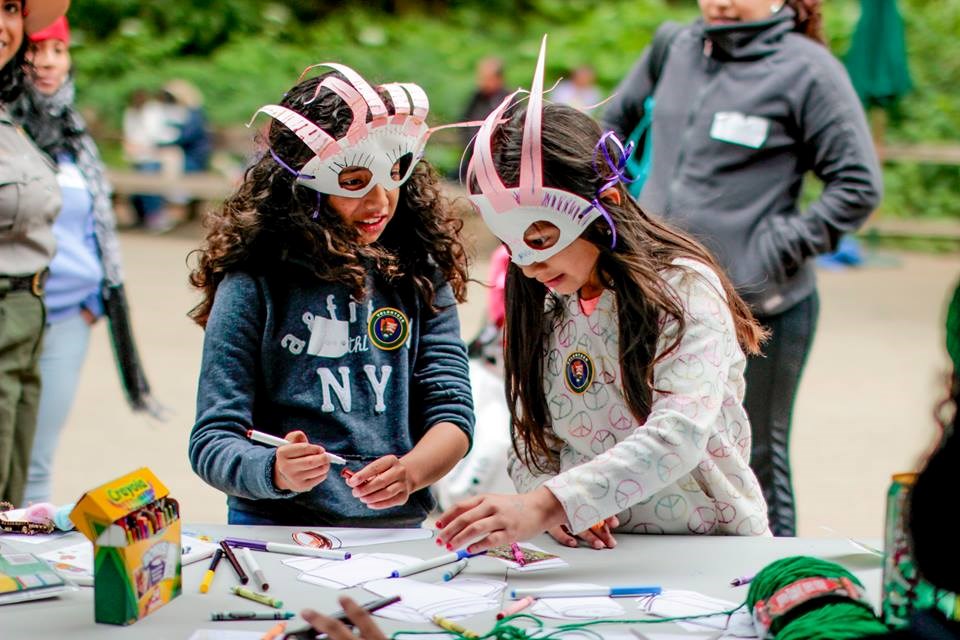Last updated: August 18, 2020
Article
National Park Getaway: Muir Woods National Monument

NPS Photo
Redwoods are the tallest trees on Earth. The tallest redwood at Muir Woods is 258 feet tall. That's the height of a six-foot person stacked head to toe 43 times. Redwood roots only go down 10–13 feet but extend sideways up to 100 feet. Redwoods interlace their wide root systems with the roots of other redwoods. In this way, the trees hold each other up. When trees fall, they become new homes as nurse logs for moss, ferns, and lichen.

NPS Photo
When Kent donated the land, President Theodore Roosevelt used the Antiquities Act of 1906 to establish Muir Woods National Monument. Kent insisted the site be named for famed naturalist and conservationist John Muir, who was influential in the preservation of wilderness and creation of public lands. It was the nation’s first national monument created for a living thing: the redwood trees. Over the past 110 years, millions of people from around the world have experienced the natural woodlands. Muir Woods National Monument protects more than 550 acres of land dominated by coastal redwoods, but this land also home to an incredibly diverse array of plants and wildlife. Peek into the past and compare it to today with a glimpse of the park then and now.

NPS Photo
Look up to see some of the park’s feathered residents living in the canopy. Pileated woodpeckers can be heard drumming trees as Stellar’s jays fly about. Old-growth forests generally have a relative scarcity of birds due to the lack of food in part from tannin on the bark of trees repelling insects and deep shade limiting the growth of flowers and fruits. Despite these unwelcoming conditions, birders can spot more than 50 species throughout the year. Muir Woods is crucial habitat for threatened birds, such as the northern spotted owl. These owls only nest in old-growth conifers like ones found in Muir Woods.

NPS Photo
Muir Woods is a popular destination, so it is important to plan ahead. Shuttle or parking reservations are required to get there. Check out our app (iOS or Android) if you are visiting the many other National Park Service sites in the San Francisco area.
